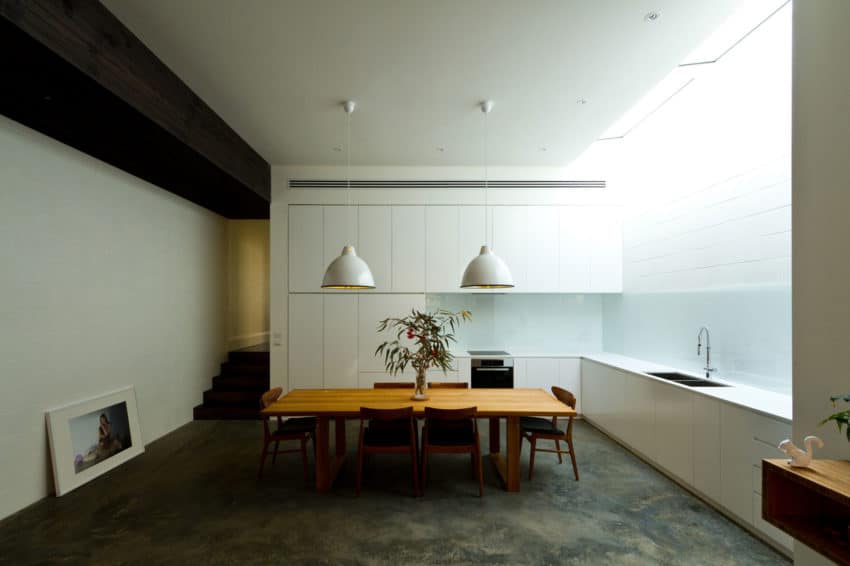Parure House is a private home designed by Architects EAT.
It is located in Kensington, Victoria, Australia.
Parure House by Architects EAT:
“The Parure House (that is, a set of jewellery to be adorned together at once) is an exercise in abject darkness versus stark light; the compact crossed with the open, and closeted privacy against unabashed experiences of the exterior environment.
Amidst the need to maximise space and storage – requiring full expansion to the boundaries of the land, windows (and also facade) were almost left to the wayside. Internal volume was the constant throughout the design. Punctuations in the external building fabric articulate the interior with strong exterior connections, even in such localised context.
Where little external space affords a view, and a sunken, subterranean feel is present (due to literally digging the house down), portals in the building fabric became the counterpoints to an expansive yet introspective blending of areas – able to straddle the need of breadth or intimacy depending on occupancy and times of day.
Where a tight, darkened corridor leads the way through the varying delineating levels of floor, light, neutral and textured rooms react willingly with the passing of daylight by ulterior means – an extension of ideas that we have been exploring in our practice; of light, space and tactile environments to mnemonically generate and trigger memories.
The courtyard is an expression of exterior perhaps more obvious than elsewhere; a lowlight window giving a glimpse of tufted garden beyond, a rooflight offering blue sky while streaming sun into the dining area, a second storey window, filtered for privacy along with exterior cladding pointing to the sky. Not only are these portals that force consideration of the external condition, but thresholds that constantly raise the idea that inside, is indeed separate to outside.
Inner-city Melbourne is more so becoming an urban paradise of increased density. Tighter land parcels, less private space and greater public amenity all increase the effort required to seek solitude and an earthen attachment. The home responds to this bigger context by converging abstractions of the larger surrounding environment, a possible model of achieving connection to elemental trends within a man-made setting.
By distancing, abstracting and limiting oneself from the external world, you grow to appreciate its subtlety and nuance, and are forced on reflection to appreciate the constant flux outside even if you can’t directly see it.
These junction elements become the focus of the home, a counterpoint to the inside spaces almost bereft of ornamentation precious jewels in the broader sense of the whole, reflecting and glinting more and more as you inspect and coalesce further into them.”
Photos by: James Coombe & courtesy of Architects EAT








































































